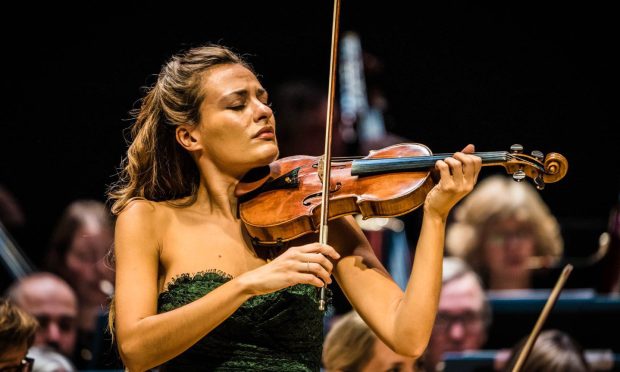The Benedetti Factor. Bottle it or package it and your box-office woes are over.
Violinist Nicola Benedetti is one of classical music’s most marketable products and wherever she goes, you can guarantee a sell-out.
Such was the Scottish Chamber Orchestra’s recent tour, and the fact she was performing the Beethoven concerto merely added accentuated the concerts’ attraction.
On Wednesday night, in the Perth Concert Hall, the concerto has to take precedence.
Not only because it is streets ahead on paper of the other works on the programme – Mozart’s symphony no. 34 and a lovely work by New York’s Jessie Montgomery – but because Ms Benedetti added some marvellous innovation to her stupendous technique.
This was in the first movement cadenza, where an unusual duet with timpani ensued. A quite wonderful revelation.
Up to then I felt it had been a low-key first movement and somewhat restrained, although her virtuosity and skill were clearly obvious. From then on it was the usual mesmeric Benedetti, as dazzling as ever, with the razzle-dazzle muted in a lyrical second movement that was totally sublime.
Moments in this Larghetto always send a delicious shiver down my spine.
She was billed as “director”, but the SCO needed little guidance. All it needed was subtle glance at fellow players now and again to maintain a unity that was perfect throughout.
This rapport manifested itself in the final rondo. As final movements of a concerto go, this takes some beating. To me this was Beethoven at his best, both in terms of composition and the interpretation of soloist and orchestra. Totally faultless from beginning to end.
‘Over-animated’ direction detracted from performance
If the two Bs – Benedetti and Beethoven – ruled the roost in the second half, it was a clash of the Ms in the first and I have to say Montgomery outweighed Mozart quite considerably.
The Mozart symphony was, well, Mozart and indistinguishable from many early works by this great man. However, the performance did heavily accentuate the SCO’s wonderful cohesion, a togetherness that is deeply imbedded in the orchestra’s DNA.
What it didn’t need was Benjamin Marquise Gilmore’s over-animated direction. It’s a bit off-putting, to say the least.
As for Jessie Montgomery’s Strum, it was pulsing with rhythm and syncopation and leant heavily on pizzicato, as the name suggests.
It was also full of vitality and vivaciousness and was melodic with much appeal. Its form was pleasantly innovative, and this short but satisfying work was performed with the SCO’s customary style.
However good it was, and however much I enjoyed it, the evening’s abiding memory was the concerto and its performance.
It has long been my favourite violin concerto for too many reasons to mention. Last night’s performance merely accentuated that fact.













Conversation